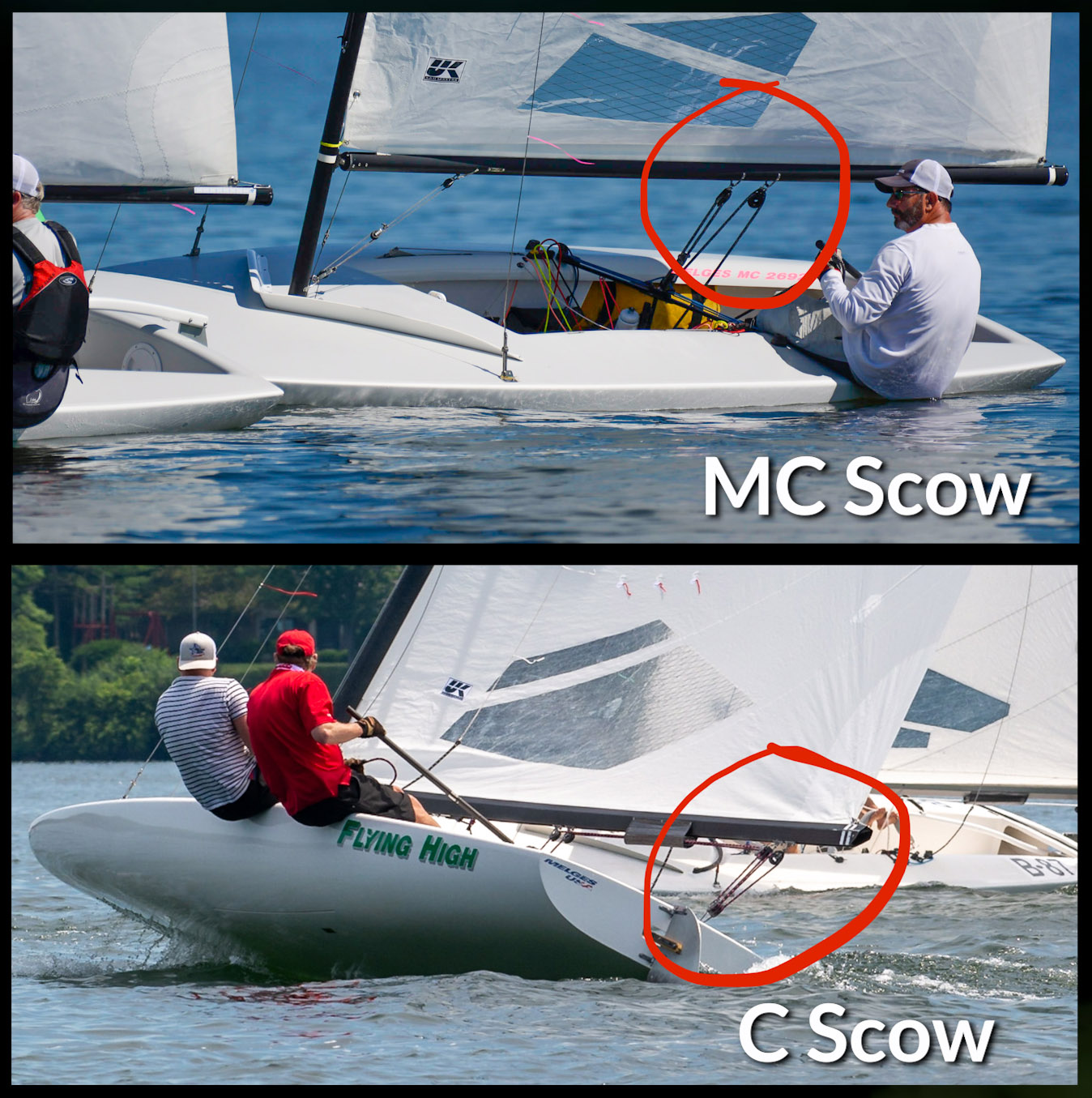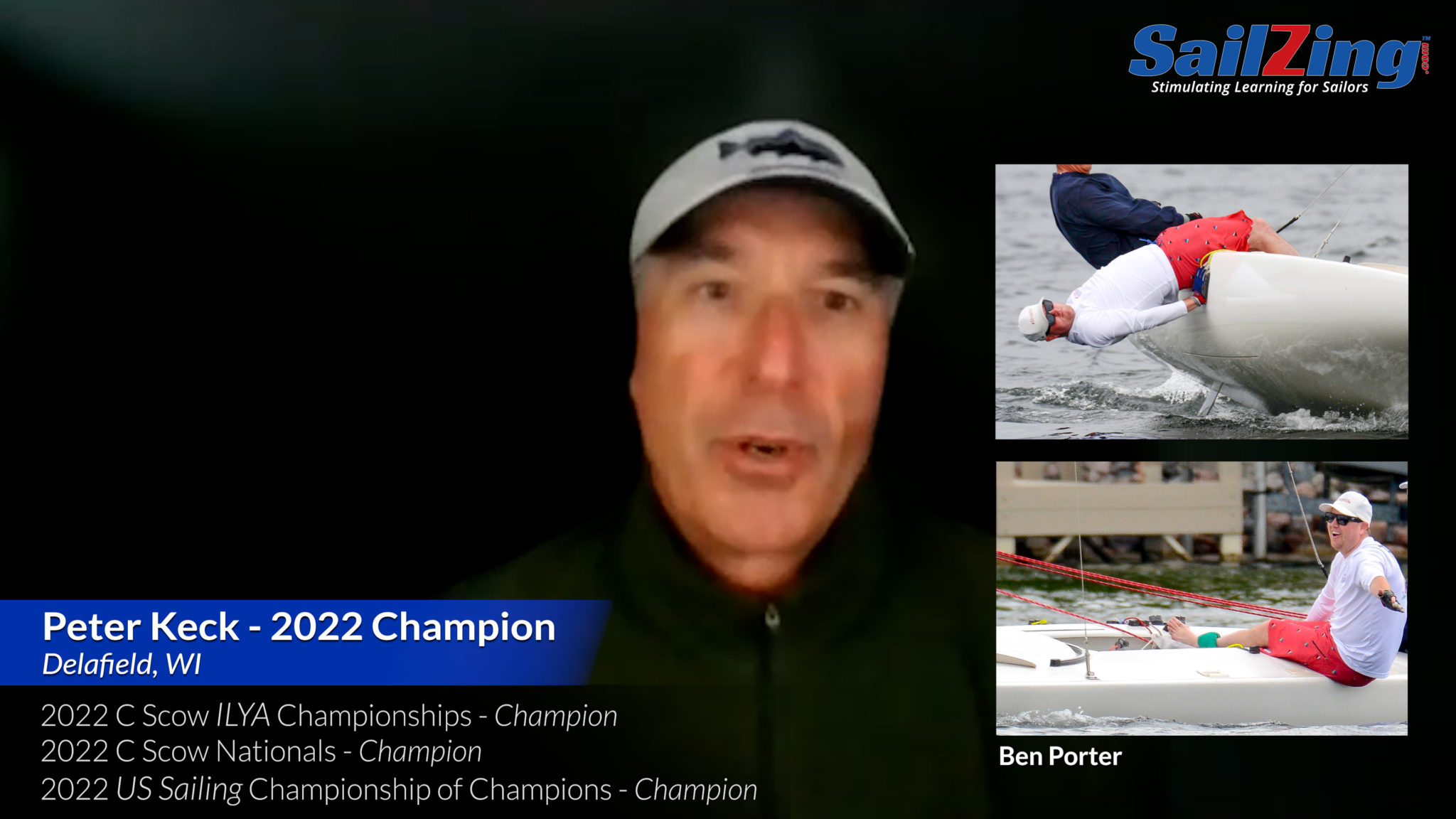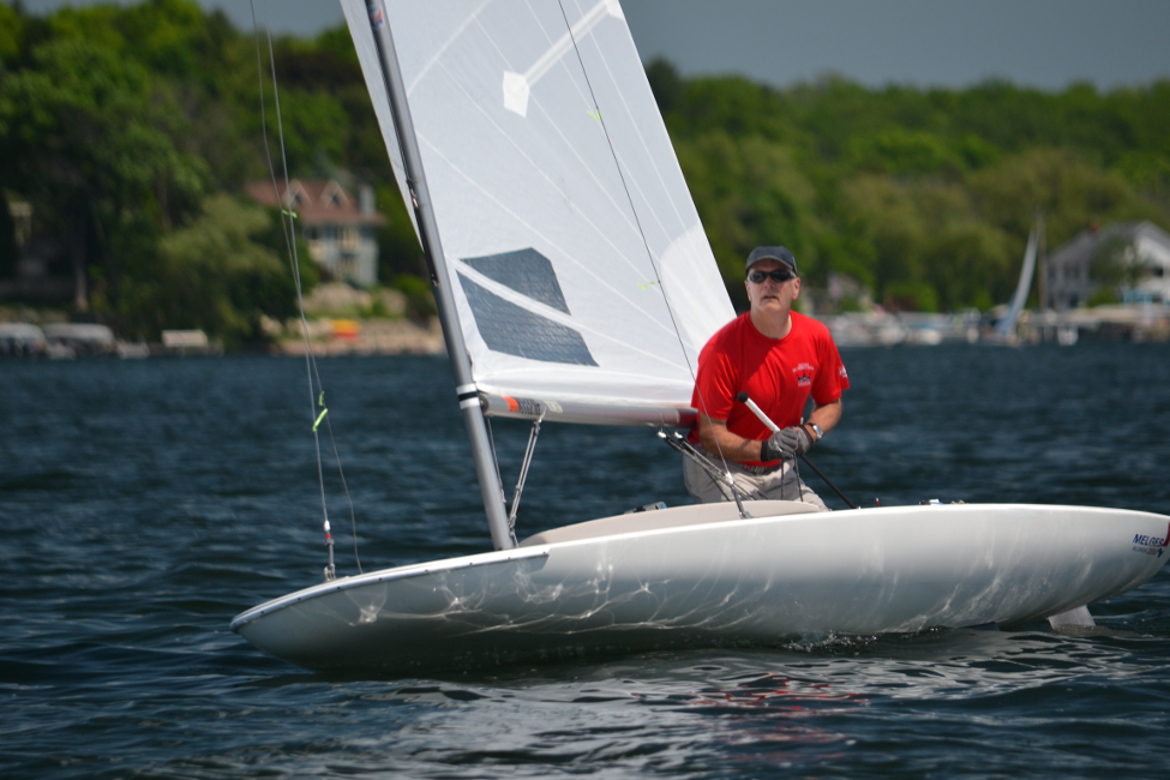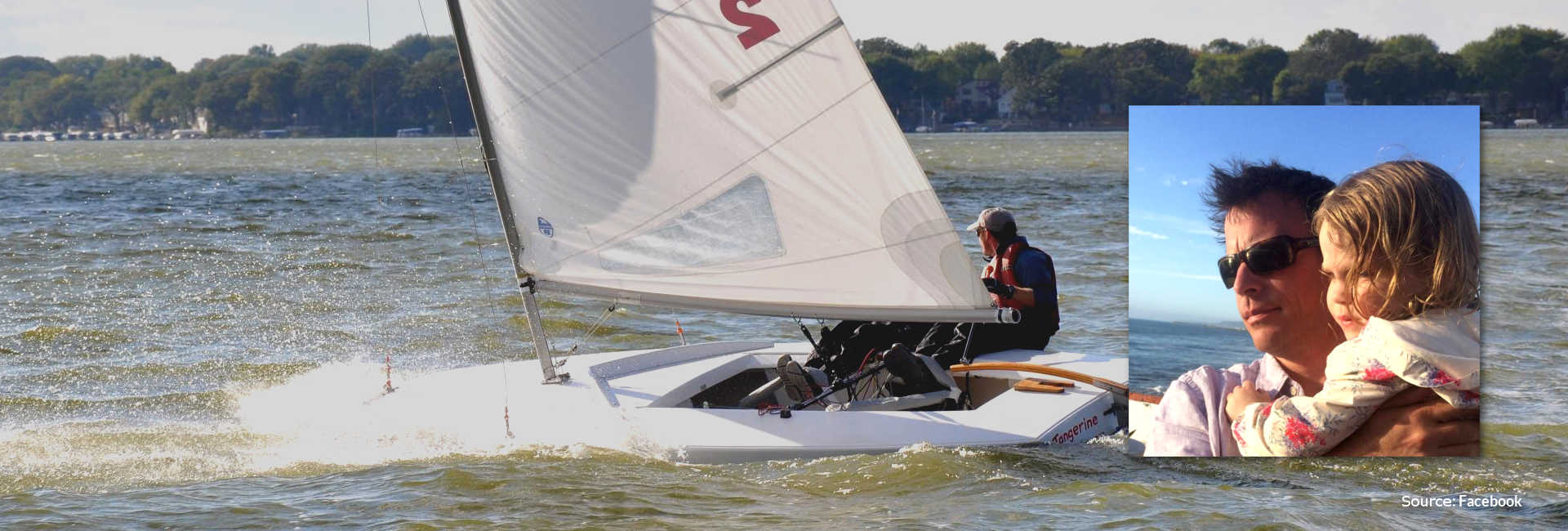Peter Keck is the 2022 Champion of US Sailing‘s Championship of Champions event held at Shore Acres Yacht Club on Barnegat Bay, NJ on October 9, 2022. We asked Peter to share some of what it took to win the Championship against other top one-design sailors.
Since the event was held in MC Scows, Peter was especially honored to win against skilled one-design sailing champions from other types of sailboats.
00:37:00 – Peter’s Background
Related Content – Andy Burdick
02:23:00 – US Sailing Championship of Champions

02:34:00 – Choosing Crew Weight – Single vs. Double
20 Race, 20 Boat series – swap boats each race
Day 1: light winds at around 6 mph with 8 races completed
Day 2: winds 8-12 mph with 5 races completed
Day 3: winds 13-16+ mph with 7 races completed
06:39:00 – Strategy & Tactics, etc.
Boat Speed was a big factor due to the short track racing format.
On the Dock: Focused on whether there were Oscillating or Persistent shifts forecast.
On the Course: Velocity, head out of the boat looking up the lake to “connect the dots” to stay in the velocity. With this racing format of switching boats each race, had to do a “systems check” to make sure that each boat was set up and functioning properly – hiking straps adjusted, leeboards movement…
Related Content – Roble / Shea Sailing & ILYA Fast Forward Training Series
09:37:00 – Prep for longer races
At the Dock: Again, Study forecasts for clues as to Persistent vs. Oscillating Shifts
On the Course: “Sail around both corners of the race course just to see if there’s any geographical bias to the racing circle”. Watch other boats sailing upwind and do wind checks looking at the flags on race committee boats and luffing head to wind at a lot of different places along the line.
Peter uses a race computer to assess distance to the starting line and watching sailing angles.
10:55:11 – How do you prioritize when to be on the lifted tack vs being in pressure (wind velocity)?
On inland lakes, it can be a hard decision to make. “It’s more about keeping your head out of the boat and looking up the lake and understanding if you’re in the best pressure before you make a decision like that. Because, often times on these small lakes, we need to sail a knock to get to the meat of the puff to tack and stay in it.”
11:29:14 – This must have been an interesting experience for you. What were your takeaways from sailing among these other champions?
“It’s a really cool idea to take a bunch of one-design sailors and have them sail against each other in the same boat.” “There were a bunch of really good sailors there…many had ties to the scow community. But, the Thistle guys and the Lightning guys are really good too.”
13:49:17 – Do you sail the MC Scow a little bit different from the C Scow?
Angle of Heal – No.
The rotating mast on the C Scow is different and the mainsheet blocks on the end of the boom vs. mid-boom on the MC Scow changes how to generate leech tension. Depowering the boat, angle of heal, and balancing experience in the C Scow helped a lot with the MC Scow.
14:31:27 – Talk more about the differences with blocks being end of boom vs. mid-boom.

C Scow (end of boom sheet blocks) – Easier to control leech tension with the mainsheet.
MC Scow (mid-boom sheet blocks) – Need to balance between “Vang Sheeting”, “Sheeting-Sheeting”, and dropping Track to get the same level of leech tension on the MC Scow.
“Was surprised at how quickly the MC powered up. If you’re a 175 pound sailor on an MC, you start to feel overpowered relatively early. In the 10 mph breeze range, you’re starting to depower the boat. Which I was a little surprised at because in the C Boat, when we sail with two, you wouldn’t be depowering at all in that stuff. So maybe that says, you want to add a crew a little earlier in an MC, if you’re my size.”
16:04:00 – Pinching in the MC Scow?
“I think you can have a high mode in the MC upwind, especially if you have full power in the boat. I end up sailing a little higher than others in the C Scow as well, at times. I think it can be situational. I don’t like to be named a pincher or a footer. I just like to do what you need to do in a stuation that you’re given.”
18:32:28 – David Stark told us that playing the vang downwind was something that he really learned. He said he was constantly adjusting it.
Related Content – David Starck: In the Mix at 2022 Championship of Champions
“I was doing that too. Even more so than the C Scow. We usually don’t put vang on downwind in the C Scow until it’s pretty windy. But in the MC Scow, you had to put a little vang on just to make sure that the top didn’t twist away.”





